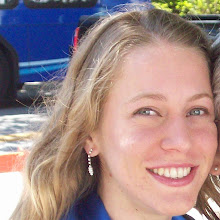In France alone, 1.3 million are killed. One-third of the male population between 20 and 27 years old is gone.
Today my program took a bus to Soissons, a rich-in-history town 50 miles northeast of Paris. Our tour guide explained how four years of bombings left 80 percent of this town in ruins. In was rebuilt in 1923.
We wandered through the gothic cathedral of Saint-Gervais-et-Saint-Protais, which was lucky enough to experience minor damages. A stroll up the hill through this French town brought us to the ruins of Saint-Jean-des-Vignes. Gapping holes reminiscent of stain glass windows stare at you sadly. We had a picnic in the beautiful sunshine on the grass behind this abbey.
Then we explored the surrounding area with multiple stops at battle sites and cemeteries. We passed "red zone" woods, which are so polluted from the war, that they are declared unsafe for 1,000 years. We were puzzled at fields of sugar beats and crops across the road from these forests. Needless to say, I'm avoiding sugar beats.

We descended into the Caverne du Dragon, which is an old query along the Chemin des Dames were costly battles ensued. This cave-like maze oscillated between French and German possession during the war. At times, both sides held up to half. It was a sought-after stronghold.
We didn't think the destruction at Soissons could get any worse until we visited what used to be the town of Craonne. An arboretum now covers the leveled town, which was rebuilt in the nearby valley. We walked over mounds which rest on crumbled houses. We saw into one cellar buried in the landscape .
My professor Gayle pointed out how she had began the week with a leadership seminar and ended with this, which was more than a day in the countryside. It caused us to think about the impact of decisions.
Next week we are visiting Normandy. Tomorrow, I'm going to the Chateau de Fontainebleau, which is a short train ride outside of Paris.
French Fact: At the start of WWI, French soldiers wore bright red trousers. After a stint of German target practice, the French Minister of War was persuaded to change uniforms to less vibrant colors.













